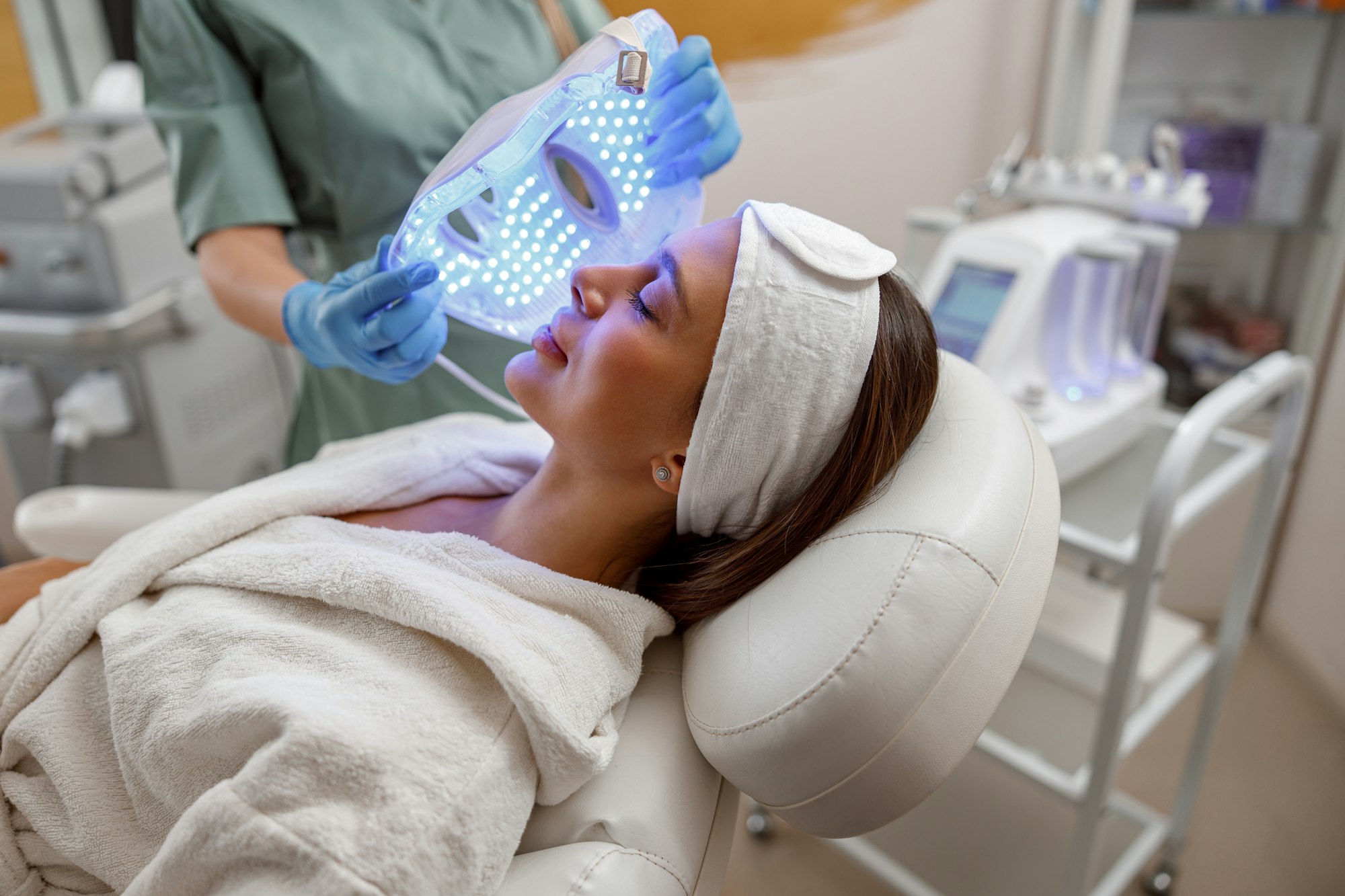LED light therapy masks, especially those with red and blue lights, are the new must-have beauty gadgets in the skincare world. They promise to help with everything from acne to aging, but with some models carrying a hefty price tag, many wonder: are they really worth the investment?
In this article, we’ll explore the latest science behind LED light therapy, its potential benefits, and whether these masks are worth your money. Plus, we’ll answer common questions to help you decide if adding one of these high-tech devices to your skincare routine is the right move.

What is LED Light Therapy?
LED (Light Emitting Diode) light therapy has been around for years, originally used by dermatologists. Now, these devices are available for at-home use. Each color of light targets different skin concerns:
- Red Light: Mainly for anti-aging, red light penetrates deeper into your skin, helping to boost collagen production and promote cell regeneration. This can reduce wrinkles and fine lines, making your skin look more youthful and firm.
- Blue Light: Best known for treating acne, blue light kills acne-causing bacteria and helps reduce breakouts. It also calms inflamed or irritated skin.
Most LED masks combine both red and blue lights, offering a complete solution for clearer, younger-looking skin.
Do These New LED Light Masks Really Work?
The research behind LED light therapy is solid, but it’s important to know that results can take time and vary depending on your skin type. Here’s what the studies say:
- Anti-Aging Effects: Red light boosts the production of collagen, a key component in keeping skin firm and smooth. As we age, our collagen production decreases, leading to wrinkles and sagging. Consistent use of red light therapy can improve skin texture and reduce fine lines over time.
- Acne Treatment: Blue light is excellent at killing Propionibacterium acnes (P. acnes), the bacteria that causes acne. With regular use, blue light can reduce acne breakouts and prevent new ones from forming.
- Safe and Non-Invasive: Unlike treatments such as chemical peels or lasers, LED light therapy doesn’t harm the skin, making it a great option for people with sensitive skin or those looking for a gentler treatment.
- Calms Inflammation: Both red and blue lights have anti-inflammatory properties, helping reduce redness and irritation for people with conditions like rosacea or eczema.
The Price Factor: What Are You Really Paying For?
LED light masks can range from $100 to over $1,000. But do you really need to spend that much to see results?
- Quality Matters: More expensive masks usually have better-quality LEDs, which penetrate deeper into the skin and provide stronger light. Cheaper masks may not be as powerful, so they may take longer to deliver noticeable results.
- At-Home vs. Professional Treatments: If you visit a dermatologist, the devices they use are more powerful than the at-home versions, so you may see quicker results. However, these treatments can be expensive, and multiple sessions are often required. At-home devices are more convenient and affordable, though less potent.
- Consistency is Key: Whether you invest in a high-end mask or a more affordable one, the key to seeing results is using it consistently. Most masks recommend using them 3-5 times a week for 10-20 minutes.
Hidden Benefits You Might Not Know About
While LED masks are often promoted for their anti-aging and acne-fighting properties, there are a few other benefits that might surprise you:
- Boosts Your Mood: Red light therapy has been used to treat conditions like Seasonal Affective Disorder (SAD). Some users report feeling more relaxed after using their masks, as red light can stimulate the production of endorphins.
- Enhances Skincare Product Absorption: Some research suggests that LED light therapy can improve the skin’s ability to absorb serums and moisturizers, making them more effective.
- Improves Blood Circulation: Red light helps improve blood flow, delivering more oxygen and nutrients to the skin. This can promote a healthier complexion and give your skin a natural glow.
Downsides to Consider
Although LED light therapy is generally safe, there are a few things you should be aware of:
- Not Suitable for Everyone: If you have a condition that makes your skin sensitive to light (like photosensitivity), or if you’re on certain medications, you should avoid LED therapy.
- Takes Time: Don’t expect instant results. It can take weeks or even months of regular use to start seeing improvements in your skin.
- Upkeep: These devices need regular cleaning and proper storage to keep them functioning well over time.
Are New LED Light Masks Worth the Money?
The value of an LED light mask really depends on what you’re looking for and how much you’re willing to spend. If you’re looking for a safe, non-invasive, at-home option to enhance your skincare routine, these masks can be a great investment. But they’re not a magic bullet—results take time, and more severe skin concerns may still require professional treatments.
To sum it up, if you’re patient and consistent, LED light masks can be a useful addition to your skincare routine. While they may not replace professional treatments entirely, they provide a convenient, at-home solution for healthier, clearer skin.

Frequently Asked Questions
- How often should I use an LED light mask?
Most masks recommend using them 3-5 times a week for 10-20 minutes per session. - Are LED light masks safe for all skin types?
Yes, they are generally safe for all skin types. However, if you have very sensitive skin or a specific condition, it’s a good idea to check with a dermatologist first. - Can I use an LED mask with other skincare products?
Yes! In fact, many people find that LED light therapy helps their skin absorb products like serums and moisturizers more effectively. - How long does it take to see results?
You’ll need to use your mask regularly for a few weeks to a few months before you start seeing noticeable changes. Consistency is key!
Sources The Guardian


